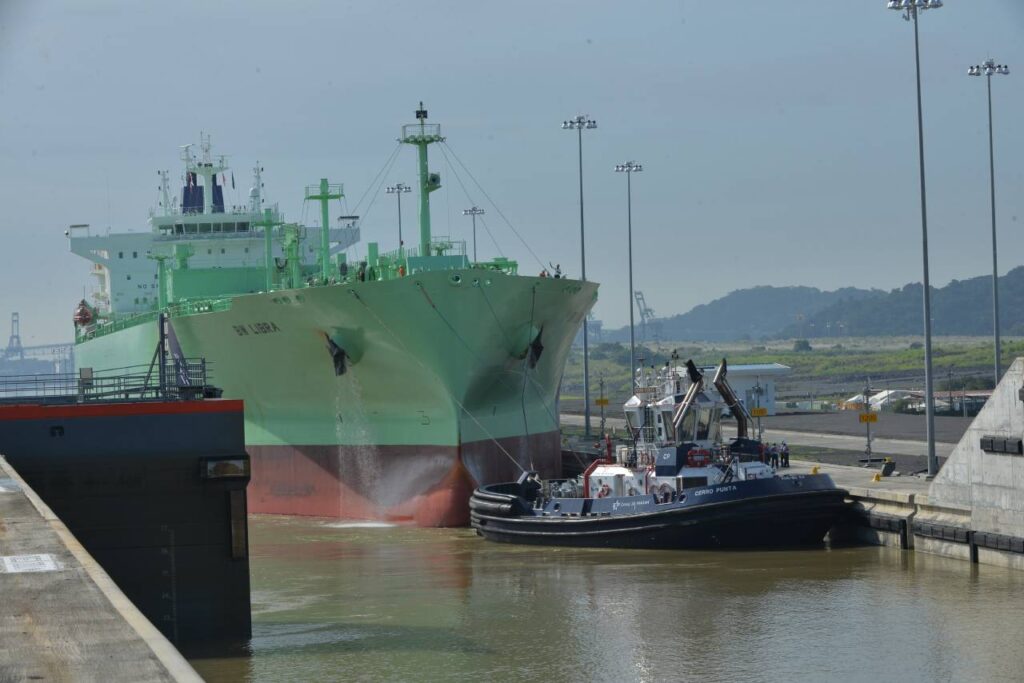As climate change intensifies, I’ve noticed a notable increase in extreme weather events hampering critical shipping routes and waterways from the Rhine to the Mississippi. From prolonged droughts to unprecedented floods, these incidents are no longer a rare occurrence, but part of a longer-term and more severe pattern that will undoubtedly impact the maritime industry in the coming decades.

While World Water Day and Earth Day spurred awareness in recent weeks, the conversation must extend beyond these singular moments and confront the economic, social, and environmental ripple effects of these climate-driven disruptions. In truth, there is an urgent need to reassess our global approach to water management. I believe recent droughts affecting critical water arteries should serve as a wake-up call for accelerated action. Furthermore, the lessons gleaned from experiences so far ought to design our strategies moving forward.
Lessons from the Panama Canal
Take the Panama Canal, a vital global trade hub that is estimated to support more than US$440 billion worth of cargo annually. Opened more than a century ago, it is a rare symbol of consistency and human ingenuity in an increasingly interconnected world. However, the Canal is no longer just a barometer for global commerce, but now an indicator of the mounting challenges posed by climate change.
Rainfall patterns have shifted and become more unpredictable in recent years, though we experienced a particularly severe drought during what should have been the rainy season last year. The cause was a combination of an intensifying El Niño climate cycle and record-breaking global warming driven by climate change. Faced with low water levels at the Canal’s reservoirs, which are essential to its operations, we were forced to start restricting transits for the first time ever. This decision was crucial to guaranteeing a sustainable supply of freshwater for both human consumption and the uninterrupted functioning of transit operations during the impending dry season.
Although we’ve managed to steadily increase transit slots since then, with plans to offer 32 in June, this recent drought at the Canal not only highlights the vulnerability of our water systems but also underscores the urgent need for innovative and collaborative solutions. To tackle water scarcity challenges effectively, we’ve learned that we must adopt a multifaceted approach that encompasses technology, policy reforms, and community engagement.
Three Critical Elements Looking Ahead
Innovative engineering solutions are pivotal in mitigating the impacts of climate change on water resources. Technological advancements, from cloud seeding to smart irrigation systems, offer promising avenues for conserving and managing water more efficiently. However, diligent attention must be paid to water quality.
To address this concern, the Panama Canal recently opened a new Water Quality Laboratory that will use state-of-the-art technology to ensure careful monitoring and protection of the water supply as other solutions are implemented.
Moreover, policy reforms are essential to ensure sustainable water management practices. Governments must prioritize investments in water infrastructure and enact legislation that promotes water conservation and equitable distribution. By fostering collaboration between stakeholders and incentivizing sustainable practices, policymakers can pave the way for a more resilient and secure water future.
Community engagement is equally critical in addressing water scarcity challenges. Local communities must play an active role in decision-making processes to foster trust and enact meaningful change. In the context of the Canal, the communities residing in the watershed are indispensable for our water conservation efforts. They contribute to preserving the environment where the water resource is located, ensuring its availability for local use and sustaining the needs of 55% of the nation’s population and operation of the waterway.
Investing in the New Climate Economy
We must recognize the interconnected nature of water management and prioritize solutions that promote sustainability, resilience, and equity. By adopting a holistic approach to water conservation, we can safeguard our precious water resources while ensuring the well-being of communities that depend on them.
While the Panama Canal has long focused on sustainability, the accelerating implications of climate change require stronger action. Our commitment to achieving net-zero greenhouse gas emissions by 2050 reflects this urgency, signaling a fundamental transformation of our business towards a more sustainable future. Beginning this year, we will integrate sustainability into our capital investments totalling over $8.5 billion over the next five years.
Funds will support the implementation of a robust water management system, in addition to infrastructure and equipment enhancements, new initiatives prioritizing sustainability, and digital transformation and decarbonization-focused improvements throughout the waterway. By ingraining sustainability into every aspect of our operations, we are confident in securing the long-term prosperity of both the Canal and our industry.
As we navigate the challenges of a changing climate, it’s essential to view crises as opportunities for transformation. By rethinking our approach to water management, we can not only mitigate the impacts of climate change but also build a more sustainable and resilient future for generations to come. We hope others heed the lessons from the Panama Canal and work together to protect our waters and our communities. The time for action is now.

Author: Ilya Espino de Marotta, Deputy Administrator and Chief Sustainability Office, Panama Canal Authority
Please refer to the following links for more information:
- Vessels in queue for transit
- Real-time Weather Radar Animation (updated every 5 minutes)
- Daily average level of Alhajuela reservoir for the last 12 months
- Daily average level of Gatun Reservoir for the last 12 months
- Daily precipitation (rainfall) by sub-basins (Alhajuela/Gatun) and cumulative in CHCP current year 2023
- Advisory to Shipping




